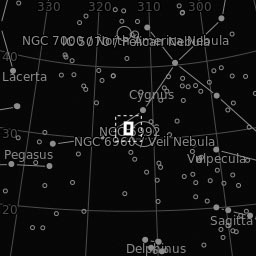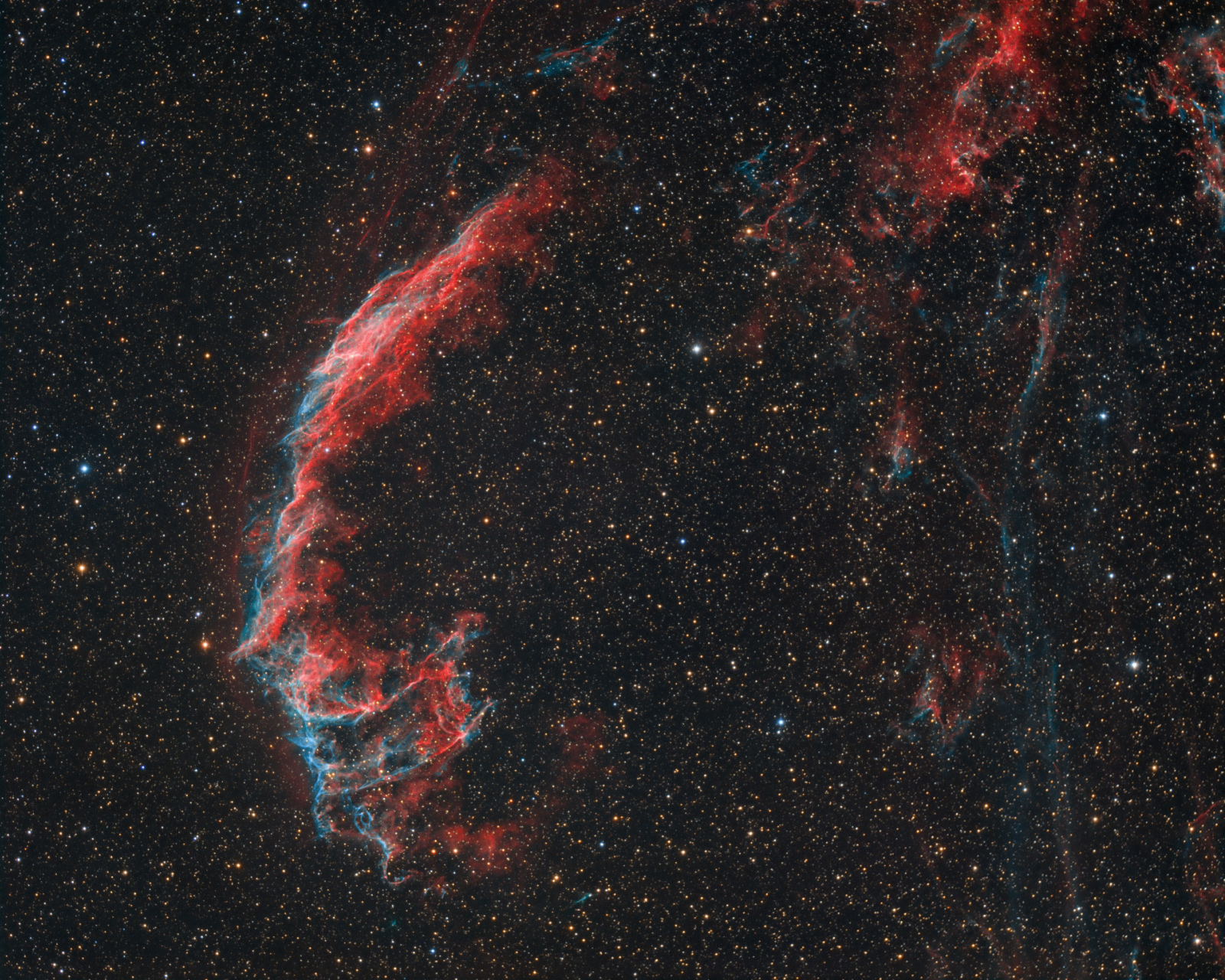
NGC 6995 Veil Nebula Mosaic
Supernova remnant in the constellation of cygnus.

Supernova remnant in the constellation of cygnus.
The Veil Nebula (also known as NGC 6995) is the visible part of the cygnus arc visible in the optical spectrum, a collection of emission and reflection nebulae, which are located at a distance of around 1,500 light-years in the constellation of cygnus. They are together the remnant of a Supernova, which took place about 8,000 years ago. Various parts of the nebula have different NGC and IC numbers. Thus, the NGC 6960, NGC 6974, NGC 6979, NGC 6992, NGC 6995, and IC 1340 all belong to the same structure.
| Object: | NGC 6995 Veil Nebula |
| Date of exposures: | 31.08.2022, 05.09.2022, 11.09.2022 |
| Distance: | 1.470 Lightyears |
| Exposures: | Ha: 42 x 480 Sec., O[III]: 42 x 480 Sec., RGB: 72 x 180 Sec., Sum. 14,75 hrs. |
| Telescope: | 10'', F4 Newton |
| Focal length: | 1000 mm |
| Filter: | Astrodon Ha 5nm, OIII 3nm |
| Camera: | ASI 1600 MMC Pro |
| Guiding: | Off Axis Guider, Lodestar |
| Mount: | EQ8 |
The nebula was discovered by William Herschel on 5 September 1784. First photographs were already made and published by Isaac Roberts at the end of the 19th century. The nebula is, however, not easy to observe despite its total brightness of about 7 mag due to its large area extension of 230 '× 160' for amateur astronomers.
For scientists, it is an ideal target because it is not obscured by foreground objects. Numerous studies have been carried out on the gas structure and gas dynamics of Supernova remains, for example detailed studies with the Hubble space telescope. Investigations by the satellite ROSAT show that the entire nebula in the X-ray range is similar to a light bulb. However, the compact remnant (neutron star, pulsar or black hole) of the Supernova is not known.This image consists of a mosaic of three parts.
Older image from 13,-17.06.2017 with the Takahashi FSQ85:
Ha: 15 x 600 Sec., O[III]: 11 x 900 Sec., RGB: 41 x 240 Sec., Sum. 7,1 hrs.
